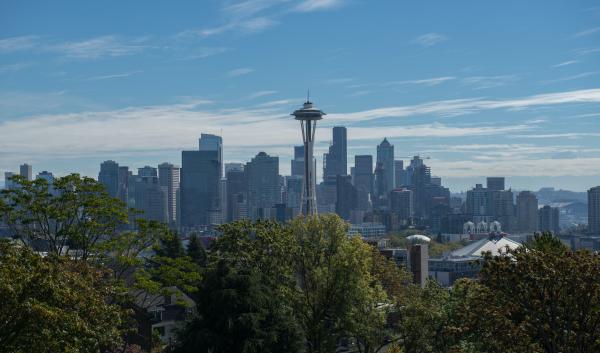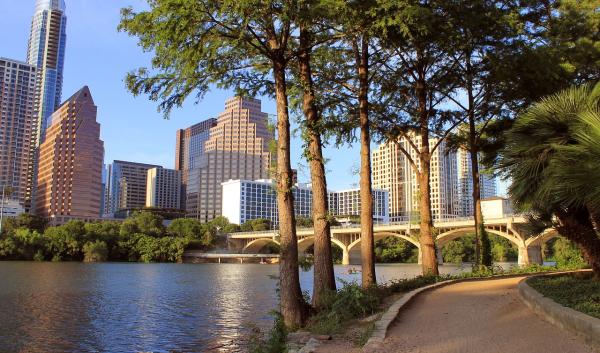Forests
 Urban areas are already experiencing impacts of a changing climate including increased temperatures, flooding, and extreme storms. These impacts are projected to increase in frequency and magnitude over the next century, leading many cities to develop plans to adapt and prepare for these challenges. Increasing tree canopy is often considered in urban climate change adaptation plans, where trees can help reduce local heat island effects, control storm water, and improve air quality. Although urban trees can be an important part of adaptation solutions, they also can be vulnerable to the impacts of climate change. Harsher summer temperatures, potential summer droughts, heavy winds, flooding, and increased pests and diseases can all stress urban trees. These urban trees may be experiencing stress from improper planting, restricted rooting conditions, road salt, and air pollution already, and therefore extremely vulnerable to climate change.
Urban areas are already experiencing impacts of a changing climate including increased temperatures, flooding, and extreme storms. These impacts are projected to increase in frequency and magnitude over the next century, leading many cities to develop plans to adapt and prepare for these challenges. Increasing tree canopy is often considered in urban climate change adaptation plans, where trees can help reduce local heat island effects, control storm water, and improve air quality. Although urban trees can be an important part of adaptation solutions, they also can be vulnerable to the impacts of climate change. Harsher summer temperatures, potential summer droughts, heavy winds, flooding, and increased pests and diseases can all stress urban trees. These urban trees may be experiencing stress from improper planting, restricted rooting conditions, road salt, and air pollution already, and therefore extremely vulnerable to climate change.
Continue to the full text of Urban Forests in a Changing Climate or browse related content:
-
Urban Forests and Human Health Adaptation Menu
The Urban Forests and Human Health Adaptation Menu is a flexible resource that synthesizes a wide range of peer-…
-
Puget Sound Urban Tree Vulnerability
Climate change will impact the vulnerability and suitability of urban tree species in the Puget Sound region
-
A Clearinghouse for Urban and Community Forestry Resources in the Southwest Region
The Southwest Climate Hub has developed an Urban and Community Forestry (UCF) database to house helpful resources and…
-
Northwest Urban Forests and Climate Change
Urban forests in the Northwest reduce urban heat islands, making cities more climate resilient and environmentally just.
-
Reducing Urban Heat through Tree Planting in Boise
This Adaptation in Action profile highlights Boise, Idaho’s tree planting campaign to reduce urban heat, offset…
-
Vulnerability Assessment of Austin’s Urban Forest and Natural Areas
Assessment of the vulnerability of Austin, Texas's urban forest to climate change.
-
Tips for Urban Forest Planning
It’s important to properly plan an urban forest first in order to ensure the greatest chance of success. To assist,…
-
Storms and Stream Crossings
Stream-crossings have a lower risk of failure if designed appropriately for the stream, and with consideration of…
-
Shifts in Growing Degree Days, Plant Hardiness Zones and Heat Zones
Climate change is already having substantial effects on natural systems and the benefits they provide. Forest…









